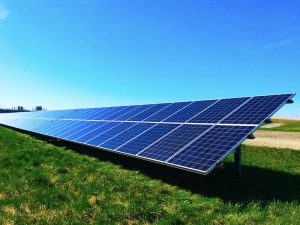Harnessing plant molecules to improve the efficiency of Solar Panels

Current solar panels, according to a report, are inefficient and contain toxic materials; however, a different approach that harnesses plant molecules such as chlorophyll could lead to improvements.
As a result, in order to generate a large amount of electricity, the panels require a large amount of space, which sometimes necessitates the destruction of forests or the replacement of farms with solar. If solar panels were more efficient, much smaller panels could produce the same amount of electricity while taking up less space.
Our current panels are inefficient; they can only convert about 20% of the sun’s energy into electricity. As a result, in order to generate a large amount of electricity, the panels require a large amount of space, which sometimes necessitates the destruction of forests or the replacement of farms with solar. If solar panels were more efficient, much smaller panels could produce the same amount of electricity while taking up less space.
Lahari Saha is working in Professor Chris D. Geddes’ lab at the University of Maryland, Baltimore County, to create more efficient panels by harnessing plants’ abilities to convert sunlight into chemical energy using biological molecules that excel at absorbing sunlight, such as chlorophyll. Saha will present her findings at the 67th Annual Biophysical Society Meeting in San Diego, California on Wednesday, February 22.
Their goal is to generate electricity from biological molecules, which can then be harvested and used to power devices or stored in batteries for later use. The process makes use of the fluorescence of molecules. “Any type of fluorescing molecule emits light. “When we excite the fluorophore, it transfers its energy to metal nanoparticles, and if the particles are close enough together, they knock off electrons and generate current,” Saha explained. According to Saha, the process is not limited to fluorescing molecules; they must also have a high absorption of light, such as chlorophyll, beta carotene, or lutein. Each of these is relatively cheap and easy to obtain from plants.
Another advantage of this type of fluorescence-based solar panel is that it is easier to recycle. Solar panels currently rely on expensive materials like silicon and contain toxic elements like lead and cadmium—in most states, solar panels are considered hazardous waste when it comes time to dispose of them. However, Saha is optimistic that her solar panels will be made primarily of plant-based molecules and other common materials such as copper, making them easier to recycle when the time comes. She also hopes that by using longer-lasting materials, the panels will last longer before they need to be replaced.
But Saha’s main goal is to create a more efficient solar panel, “so it doesn’t have as large of a footprint,” she explained. She hopes that her smaller solar panels will allow farms to prioritize food production over energy generation while also preserving forests.
Thanks For Reading.
